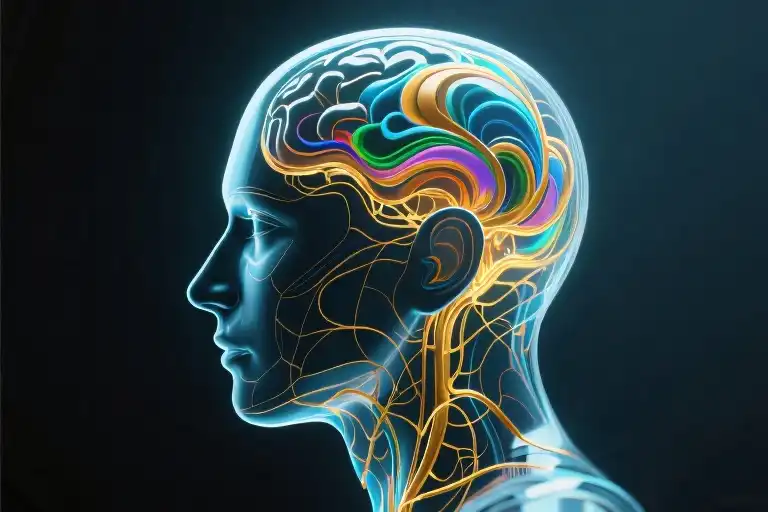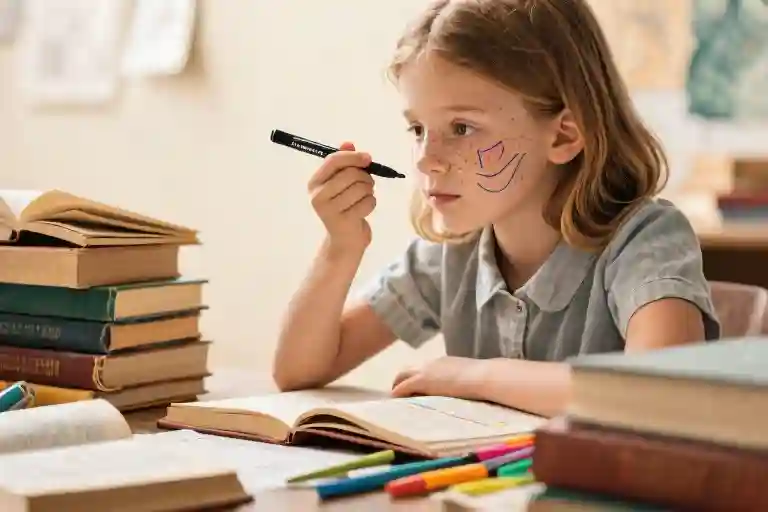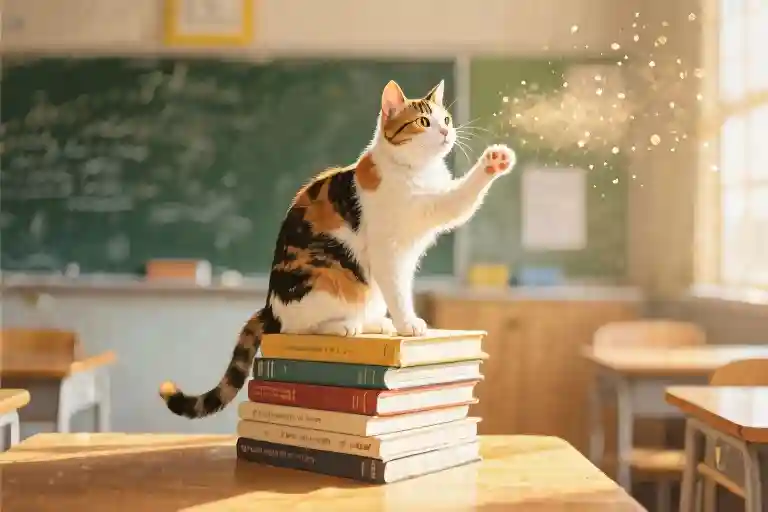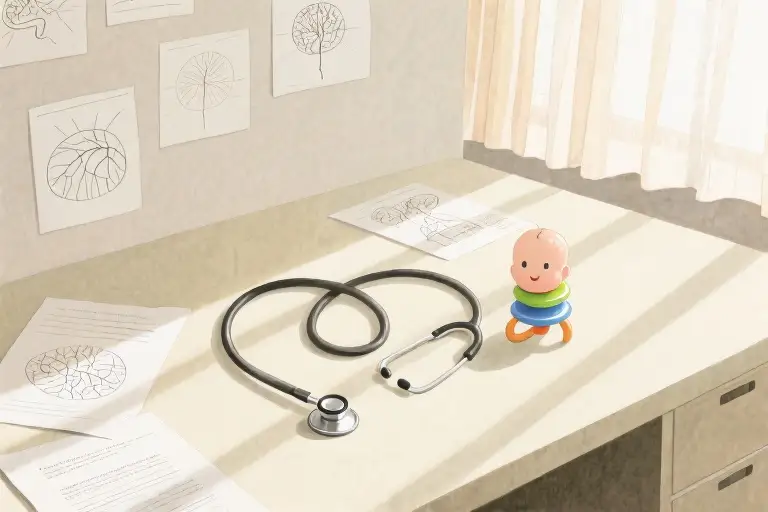Close your eyes and picture a tree in your mind. What do you see? Is it a crisp image with textured bark and rustling leaves? A faint pencil sketch? Or perhaps—like me—do you see absolutely nothing at all?
This simple thought experiment reveals one of neuroscience’s most fascinating cognitive variations: aphantasia, the inability to voluntarily create mental images. For those of us with this neurological trait, the phrase “mind’s eye” isn’t just metaphorical—it describes a literal blind spot in our imagination.
When researchers first asked me to visualize common objects during cognitive tests, I assumed everyone experienced the same blank darkness I did. The revelation that most people can conjure detailed mental pictures felt akin to discovering others had a secret superpower. Yet despite this difference, I navigate daily life perfectly well—recognizing faces, solving problems, even dreaming in vivid color.
Aphantasia affects approximately 1 in 25 people according to Exeter University’s research, though many go undiagnosed because we assume everyone thinks the same way. The condition exists on a spectrum—some see fleeting shadows while others (like myself) experience complete visual absence. What makes this particularly intriguing is how it challenges our assumptions about consciousness. How can someone who can’t imagine a sunset still describe its colors accurately? Why do my dreams contain rich imagery when my waking mind doesn’t?
This discovery transformed my understanding of neurodiversity. Our brains don’t just process information differently—we experience fundamentally distinct realities. Where one person recalls memories as vivid home movies, another might access them through abstract concepts or emotional impressions. Neither approach is superior—just beautifully varied ways of being human.
If you’re now wondering where you fall on this cognitive spectrum, you’re not alone. That moment of self-discovery—realizing your brain works differently than others—can be equal parts disorienting and liberating. In the following sections, we’ll explore what science reveals about visual imagination, why some minds “see” differently, and how understanding these variations helps us appreciate the remarkable diversity of human cognition.
What Is Aphantasia?
Aphantasia is the inability to voluntarily create mental images in one’s mind—a condition often described as having a ‘blind mind’s eye.’ For most people, phrases like ‘picture this’ or ‘imagine a beach’ trigger vivid visualizations. But for those with aphantasia, these instructions yield only darkness or abstract conceptual understanding without sensory details.
The Science Behind the Blank Screen
Neurologically, aphantasia appears linked to differences in how the brain’s visual cortex and memory systems interact. While typical brains reconstruct images by activating visual processing areas, aphantasic individuals may rely more heavily on semantic networks—storing facts rather than sensory impressions. Research suggests this isn’t a disability but an alternative cognitive style, with about 4% of the population experiencing extreme forms of non-visual thinking (Zeman et al., 2015).
Living Without Mental Images
My personal discovery came during a conversation about memory techniques. While friends described visualizing childhood homes down to wallpaper patterns, I realized my recollections existed purely as verbal descriptors: ‘My mother had curly hair parted to the left’ rather than any internal portrait. This semantic knowledge remains detailed—I can list every piece of furniture in my first apartment—but arrives without visual components.
Key characteristics include:
- Conceptual vs. Sensory Recall: Knowing an apple is red without ‘seeing’ red
- Intact Spatial Awareness: Navigating familiar places despite lacking mental maps
- Dream Paradox: Many report vivid visual dreams (including myself) despite waking imagery absence
The Spectrum of Visualization
Human imagination exists on a continuum. At one end are hyperphantasics who experience near-hallucinatory clarity; at the other, aphantasics like myself with zero voluntary imagery. Most fall somewhere between—perhaps visualizing blurry outlines or fleeting impressions. This diversity highlights how fundamentally our brains can differ while remaining fully functional.
Why It Matters
Understanding aphantasia challenges assumptions about universal cognitive processes. In education, it suggests visual learning techniques may disadvantage some students. Creatively, it reveals how artists like authors or programmers can produce vivid work without ‘seeing’ it internally. Most importantly, it normalizes neurodiversity—demonstrating there’s no single ‘correct’ way for minds to operate.
The Sleeping Mind’s Eye: When Dreams Defy Aphantasia
One of the most baffling aspects of living with aphantasia isn’t what happens when I’m awake – it’s what happens when I’m asleep. During daylight hours, my mind’s eye remains stubbornly dark. Ask me to visualize a sunset, and I’ll describe golden hues melting into horizon lines with precise technical accuracy… while seeing absolutely nothing. But come nightfall, my brain stages full-color productions worthy of a Hollywood studio.
The Paradox of Visual Dreams
I remember the first time this contradiction struck me. After a particularly vivid dream about hiking through a volcanic landscape (complete with glowing lava rivers and ash clouds that made me cough in my sleep), I lay awake trying to recreate the scene mentally. The harder I concentrated, the more the images slipped away – like trying to hold smoke in my hands. Yet moments before, those same images had felt as real as my bedroom walls.
This isn’t just my personal quirk. Research from the University of Exeter’s aphantasia studies shows that about 40% of people with congenital aphantasia report detailed visual dreams. Some even experience more intense dream imagery than their visually imaginative counterparts – as if the sleeping brain overcompensates for waking deprivation.
The Neuroscience Behind the Curtain
So what’s happening inside our skulls when we sleep? Current theories suggest two parallel visualization systems:
- Conscious Visualization Pathway (awake)
- Requires prefrontal cortex engagement
- Involves deliberate mental effort
- Disrupted in aphantasia
- Automatic Visualization Pathway (dreaming)
- Driven by limbic system and temporal lobe
- Operates outside conscious control
- Often remains intact
Dr. Adam Zeman, who coined the term “aphantasia,” compares this to having a projector with a broken manual switch but perfectly functional automatic settings. “The visual machinery is there,” he explains, “it just can’t be turned on voluntarily.”
Your Brain’s Night Shift
For those wondering where they fall on this spectrum, try this simple sleep experiment:
- Keep a dream journal by your bed
- Upon waking, immediately note:
- Presence/absence of images
- Color intensity (black-and-white vs. vibrant hues)
- Spatial awareness in the dream
- Compare with your daytime visualization abilities
Many aphantasics discover their dream visuals operate on completely different rules than their waking cognition. One research participant described it as “living two separate mental lives” – which sounds dramatic until you experience that midnight cinema for yourself.
Why This Matters
Understanding this dissociation helps normalize the aphantasia experience in three crucial ways:
- Confirms our brains aren’t “broken” – Just differently wired
- Explains artistic contradictions – Many aphantasic artists create stunning visual work
- Offers memory clues – Dreams may reveal latent visualization capacities
As I’ve learned to embrace both my “blind” waking mind and my technicolor dream world, I’ve come to see this not as a bug, but as a fascinating feature of human neurodiversity. The very fact that our brains can partition these functions suggests untapped potential in how we all process reality – whether we “see” it or not.
Testing Your Mind’s Eye
Let’s try a quick experiment together. I’ll describe five scenarios, and you’ll rate how vividly you can visualize each one on a scale from 1 (no image at all) to 5 (as clear as real life). This adapted version of the Vividness of Visual Imagery Questionnaire (VVIQ) will help you understand where you fall on the visualization spectrum.
The 5-Question Aphantasia Test
- A familiar face: Picture someone you know well – maybe your best friend or a family member. Can you see their smile, the shape of their nose, how their hair falls across their forehead?
- Rating: __
- A rising sun: Imagine a sunrise over the ocean. The colors spreading across the horizon, light reflecting on the water’s surface.
- Rating: __
- Your childhood home: Visualize walking through the front door. The layout of rooms, furniture placement, any distinctive smells or textures.
- Rating: __
- An apple: Picture holding a red apple – its glossy surface, the stem protruding from the top, the weight in your hand.
- Rating: __
- A moving scene: Imagine a dog running through a park, its ears flopping, tail wagging, paws kicking up autumn leaves.
- Rating: __
Interpreting Your Results
- Mostly 4s-5s: You have strong visual imagery – your “mind’s eye” creates detailed pictures.
- Mostly 2s-3s: You experience moderate visualization – images exist but lack sharpness.
- Mostly 1s: You likely have aphantasia like me – thoughts exist as concepts rather than images.
My Personal Wake-Up Call
I first realized my brain worked differently during an art class. While classmates sketched from memory, my paper stayed blank. “Just picture your mother’s face,” the instructor said. I knew my mother had brown eyes and curly hair – I could list every feature – but no image appeared. This moment became the first panel in my comic about discovering aphantasia.
What surprised me most? Learning that when others “count sheep,” they actually see woolly animals jumping a fence. For me, it’s always been just the abstract idea of counting.
Where Do You Fit?
Human visualization ability forms a spectrum. Some see photorealistic mental images, others experience vague impressions, and about 4% of us see nothing at all. There’s no right or wrong way – just different neurological wiring.
Want to explore further? Try the full VVIQ test at [Aphantasia Network]. And if you’re curious about my journey, the complete comic shows how comparing notes with friends revealed our brains’ surprising diversity.
Your turn: What number did you give the sunrise question? Could you actually see colors, or just know conceptually what a sunrise looks like? Share your most surprising result in the comments!
Thinking Without Pictures: Alternative Cognitive Strategies
For those with aphantasia, the realization that others can conjure mental images often sparks a pressing question: How do I process information without visual imagination? The answer lies in the brain’s remarkable adaptability – it develops alternative pathways that are equally effective, just different.
Semantic Coding: The Power of Words
Many aphantasic individuals naturally gravitate toward semantic memory systems. Instead of visualizing an apple, we might catalog its attributes verbally: red, round, waxy surface, sweet-tart flavor. This linguistic approach creates a rich database of factual associations that serves the same functional purpose as mental imagery.
Practical application: When memorizing historical dates, focus on creating vivid verbal narratives rather than attempting mental timelines. The story of “Columbus sailing the ocean blue in 1492” works precisely because it converts data into language-based patterns.
Spatial Modeling: Mind Maps Without Images
Surprisingly, many with aphantasia excel at spatial reasoning. A software developer I interviewed describes building “logic trees” – not as visual diagrams, but as interconnected conceptual nodes with tactile relationships. “I feel the branches extending left and right,” he explains, “like navigating a dark room with outstretched hands.”
Try this: When learning anatomy, trace body systems through physical movement rather than textbook diagrams. Mapping the circulatory system by tapping corresponding body parts can create durable spatial memory.
Tactile Anchoring: Memory Through Sensation
The absence of visual recall often heightens other sensory channels. One architect with aphantasia reports remembering buildings through their “texture vocabulary” – the coolness of marble, the grain of oak, the reverberation of footsteps in a vaulted space. These kinesthetic impressions form a parallel memory system.
Exercise: When meeting new people, consciously note non-visual cues – voice timbre, characteristic gestures, or even scent. These become reliable recognition triggers.
Case Study: The Non-Visual Programmer
James, a senior engineer at a tech firm, credits his aphantasia for his debugging prowess. “While colleagues visualize code flow, I construct multilayered verbal descriptions,” he shares. His error-spotting method involves creating exhaustive “if-then” scenarios that often catch edge cases visual thinkers overlook.
This aligns with emerging research suggesting aphantasic individuals frequently develop enhanced:
- Abstract reasoning skills
- Verbal fluency
- Procedural memory
Cognitive Toolbox for Daily Life
- Navigation: Use landmark narratives (“turn right after the pharmacy with the blue awning”) rather than mental maps
- Reading: Focus on character attributes lists instead of imagined appearances
- Creativity: Try audio brainstorming – describe ideas aloud to capture non-visual concepts
- Learning: Convert diagrams into tactile models using clay or building blocks
What these strategies share is a fundamental truth: human cognition isn’t about the tools we lack, but about how we optimize the tools we have. As neuroscientist Dr. Helen Zhou notes, “The aphantasic brain doesn’t skip the visualization step – it develops a completely different workflow that bypasses the need for imagery altogether.”
Your turn: What non-visual thinking strategies have you developed? Share your unique cognitive workarounds in the comments – your approach might help others navigate their own neurological diversity.
The Neurodiversity Manifesto: Celebrating Cognitive Spectrums
Beyond Aphantasia: The Full Spectrum of Visualization
Our minds operate on a breathtaking continuum when it comes to visual imagination. At one end stand individuals with hyperphantasia – those who can conjure photorealistic mental images with cinematic detail. At the opposite pole exist those of us with aphantasia, navigating life without a mind’s eye. Between these extremes lies a rich tapestry of cognitive diversity that science is only beginning to map.
Recent studies reveal this isn’t binary categorization but a fluid spectrum:
- Hyperphantasics (1-2% of population): Can mentally rotate 3D objects, replay memories like videos
- Standard visualizers (~60%): Experience moderate imagery clarity for familiar objects
- Low visualizers (~35%): See fleeting, fragmented impressions
- Aphantasics (2-4%): Experience complete absence of voluntary imagery
The #HowISee Movement
This isn’t about deficits or advantages – it’s about recognizing different cognitive operating systems. The #HowISee initiative invites people worldwide to share their unique visualization experiences through:
- Personal stories: “I memorize faces through verbal descriptors like ‘heart-shaped jawline'” – Sarah, graphic designer with aphantasia
- Creative adaptations: How architects vs. programmers leverage their visualization strengths
- Cultural comparisons: Does language influence our mental imagery? (Mandarin speakers report different visualization patterns than English speakers)
Thriving With Different Brains
For those without visual imagination, alternative cognitive strategies emerge naturally:
Semantic Superpowers
Aphantasics often develop enhanced:
- Verbal memory (recalling exact wording)
- Spatial reasoning (mentally navigating without visuals)
- Conceptual understanding (grasping abstract systems)
Practical Workarounds
- Memory: Creating vivid verbal descriptions instead of mental pictures
- Learning: Using physical models rather than imagined diagrams
- Creativity: Many aphantasic artists work through iterative physical sketching
Your Brain’s Unique Signature
As neuroscientist Dr. Elena White notes: “We’ve found identical professions thriving with opposite visualization capacities – brilliant surgeons with aphantasia and hyperphantasia alike. The brain compensates magnificently.”
Join the Conversation
Where do you fall on the spectrum? Share your #HowISee story and discover how others experience the world differently. After all, neurodiversity isn’t about fixing differences – it’s about celebrating the myriad ways human consciousness manifests.
“My aphantasia isn’t a missing piece – it’s just a different puzzle shape.” – Mark, aphantasic teacher
Share Your Brain’s Blueprint
So where do you land on the mind’s eye spectrum? Whether you see photorealistic images or conceptualize the world through abstract connections like I do, your brain has its own unique operating system. The results might surprise you—I’d love to hear about your experience in the comments below. Tell me: What’s your visualization style? Do you dream in technicolor but draw mental blanks like me?
For those who want to explore further:
- Dive deeper into my journey: Full comic series on discovering aphantasia (Spoiler: It involves an awkward family dinner revelation)
- Take the professional assessment: VVIQ (Vividness of Visual Imagery Questionnaire) – the gold standard test used by neuroscientists
Remember, there’s no “right” way to imagine. Your brain’s unique wiring isn’t a bug—it’s a feature. As we continue exploring neurodiversity together, I’ll be sharing more about how non-visual thinkers like me navigate creative work, memory techniques, and even emotional recall.
Until then, keep marveling at that incredible three-pound universe between your ears. Who knows what other cognitive surprises we’ll uncover when we start asking “How does your brain work?” instead of assuming we all process the world identically.
P.S. Found this helpful? Tag someone who should take the visualization test—you might help them have their own “Turns out I have aphantasia!” lightbulb moment.





